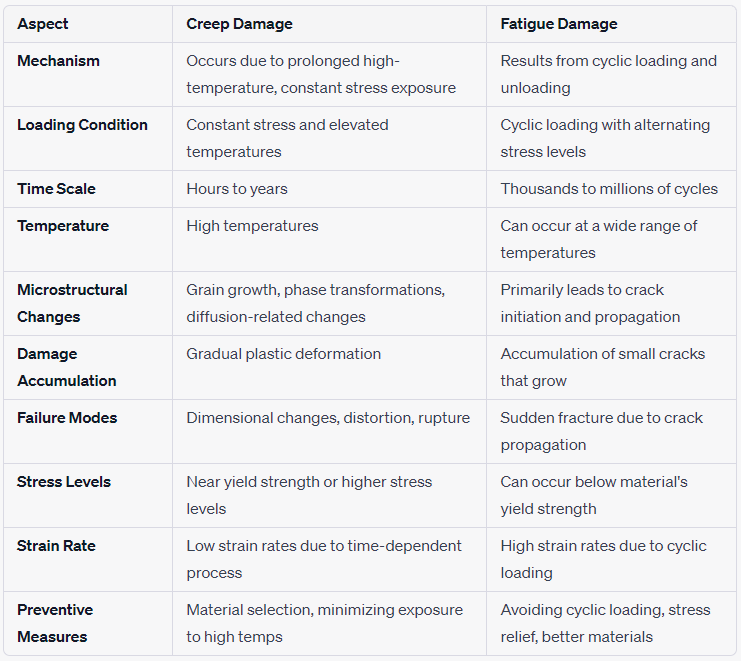TOP 10 Facts about Chloride Stress Corrosion Cracking CLSCC
- matintegrity
- Dec 27, 2022
- 3 min read
Credit: https://www.hse.gov.uk/safetybulletins/images/thermowell-corrosion-pic3.jpg
Chloride stress corrosion cracking (CLSCC) is a form of cracking mechanism that can occur in certain metals, such as stainless steel and aluminium, when they are subjected to both tensile stress and a corrosive environment containing chlorides.
CLSCC can also occur in other metals, such as copper and brass, under certain conditions.
Below are 10 facts about CLSCC:
CLSCC is a form of stress corrosion cracking (SCC), which is a type of corrosion that occurs under the combined influence of tensile stress and a corrosive environment as well as susceptible material.
CLSCC is characterized by the formation of cracks in the metal surface, which can grow and eventually cause failure of the material.
The presence of chlorides, such as sodium chloride (salt), is necessary for CLSCC to occur. Chlorides can accelerate the corrosion process by attacking the passive layer that protecting the metal surface weakening and penetrating it.
CLSCC is a concern in many industries, including oil and gas, chemical processing, marine, and power generation, where metal structures and equipment are subjected to tensile stress and may be exposed to any halides.
CLSCC can be difficult to detect and predict, as it often occurs without visible signs of corrosion and can progress rapidly once it starts.
CLSCC can be prevented or mitigated by reducing the tensile stress on the metal, eliminating the presence of chlorides, or using corrosion-resistant materials. Regular inspection and maintenance can also help to identify and address any potential CLSCC issues.
CLSCC is typically found in areas of the metal that are subjected to high tensile stress, such as welds, corners, and sharp edges, cold forming.
CLSCC can be initiated by small surface defects, such as scratches or dents, which can act as stress concentrators and promote the formation of cracks.
The corrosive environment required for CLSCC to occur typically contains a high concentration of chlorides, such as salt water or salt-containing air. However, even low levels of chlorides can contribute to CLSCC if the metal is subjected to sufficient tensile stress.
CLSCC can be difficult to detect and predict, as it often occurs without visible signs of corrosion and can progress rapidly once it starts.
Please share your thoughts with additional facts in the comments section
Answer the following 10 multiple choice questions about chloride stress corrosion cracking:
What is the primary cause of chloride stress corrosion cracking (CLSCC)?
a. Corrosive environments
b. High levels of chloride ions in the environment
c. High levels of stress on the material
d. All of the above
Which of the following materials is most susceptible to CLSCC?
a. Stainless steel
b. Carbon steel
c. Aluminum
d. Copper
What is the main mechanism by which CLSCC occurs?
a. Pitting corrosion
b. Crevice corrosion
c. Intergranular corrosion
d. Erosion corrosion
In which of the following environments is CLSCC most likely to occur?
a. Fresh water
b. Salt water
c. Dry air
d. Humid air
What is the primary factor that determines the susceptibility of a material to CLSCC?
a. The material's chemical composition
b. The material's microstructure
c. The material's surface finish
d. The material's tensile strength
How can the risk of CLSCC be reduced or eliminated?
a. Increasing the material's corrosion resistance
b. Decreasing the level of stress on the material
c. Both of the above
d. None of the above
What is the most effective way to test for CLSCC?
a. Visual inspection
b. Electrochemical testing
c. Non-destructive testing
d. Microscopic examination
Which of the following is a common non-destructive testing method for detecting CLSCC?
a. Magnetic particle testing
b. Ultrasonic testing
c. Radiographic testing
d. All of the above
How can the risk of CLSCC be mitigated in design and construction?
a. Using materials with high corrosion resistance
b. Protecting the material from corrosive environments
c. Both of the above
d. None of the above
Which of the following industries is most affected by CLSCC?
a. Oil and gas
b. Chemical processing
c. Marine
d. All of the above
Contact us if you have any questions or to suggest future topics to be discussed







Comments